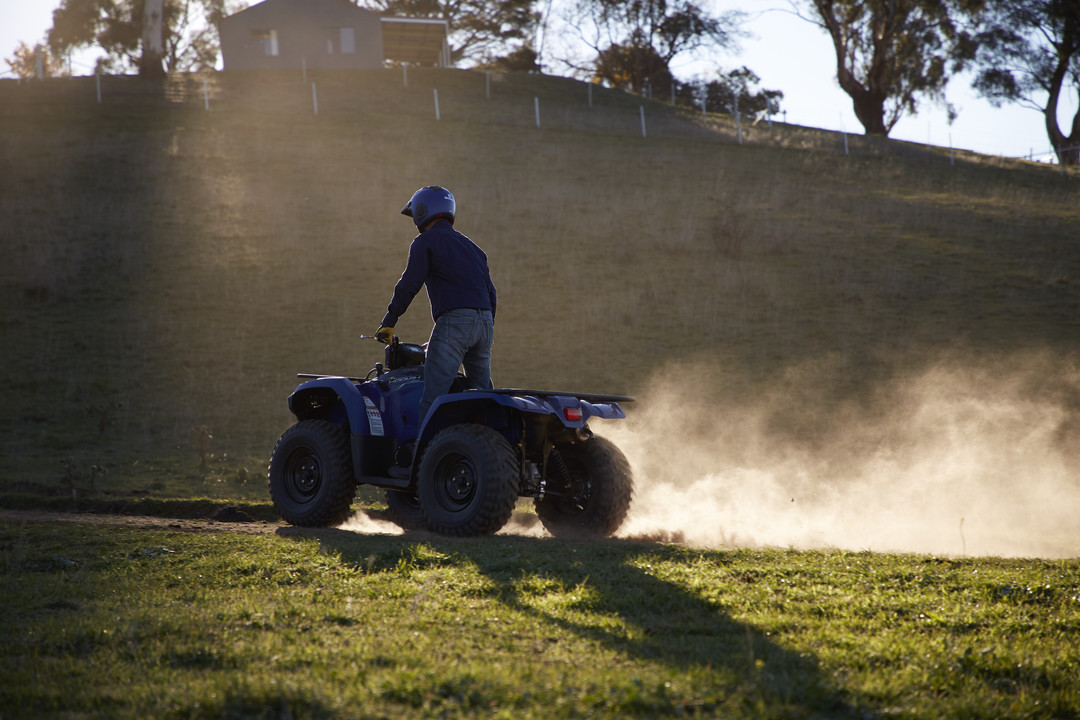Why ATV Ruling Affects Everyone
I’ve been in the motorcycle media game for 25 years, and I can’t remember a time in that quarter-century when the topic of ATV safety wasn’t being hotly debated. Honestly, it feels like there’s either been a coronial inquest or some sort of official enquiry into the disproportionate numbers of deaths associated with ATVs on an almost ongoing basis during that time. And in recent weeks, the issue has come to a head when the Australian Government confirmed widespread concerns by announcing that roll-over ‘protection’ devices must now be fitted to all-terrain vehicles sold in Australia.

For the motorcycle industry, the elephant in the room is the massive financial impact for the major ATV manufacturers (who say this legislation will force them to cease ATV production entirely within two years) and its flow-on effect to the other areas of their business that ATV sales bankrolls – in particular, motorcycle racing budgets.
This complex issue was encapsulated in a recent press release by the FCAI (Federal Chamber of Automotive Industries), and it makes for both interesting and alarming reading. Under the heading “ATV industry questions the ability of the Government’s new safety standard to actually save lives,” it says:
Australian all-terrain vehicle (ATV) manufacturers today responded to the Australian Government’s announcement that roll-over ‘protection’ devices must now be fitted to all-terrain vehicles sold in Australia. The group, which includes five of the main ATV manufacturers, was unanimous in its criticism of the Government’s ruling for the following reasons:
- University of NSW research showing that quad bikes fitted with the most popular brand of roll over device were involved in a statistically significant increase in the risk of serious injury to the rider.
- The same survey study showed that there was no overall injury benefit in a roll over when a roll-over protection device was fitted.
- These devices are unsophisticated secondary accessories, designed as a one-size-fits-all, and crudely bolted on after sale.
- There is no way of knowing how they will behave in a crash situation.
- They have huge potential to cause further injury or even death to vehicle riders.
- There is an unresolved question regarding the legal obligations pursuant to the fitment of such a device. Who will be responsible should a fatality or injury be attributable to the untested device? The device manufacturer? The ATV manufacturer? The fitting agent? The Government for legislating their fitment?
The manufacturers, represented by the Federal Chamber of Automotive Industries (FCAI), have long recommended the following known safety practices to assist workplaces to improve ATV safety outcomes:
- Select a vehicle that is best suited to the task, terrain and operator’s skill.
- Ensure riders are trained so they fully understand the vehicle attributes and limitations.
- Ensure the operator is physically fit, wears a helmet and is not intoxicated.
- Observe correct riders and loads; never allow children (under 16) on adult-size ATVs; or passengers on single-seat ATVs; don’t overload your vehicle and take special care on hills when carrying loads.
- Follow the manufacturer’s warnings and advice.
Employers and workplaces should complete a risk assessment of ATV use in their workplace to ensure potential risks are identified, and that measures are put in place to reduce these risks.
Further to that, as outlined by a Honda Australia release on the issue, “The standard is effectively a ban by stealth – designed to move the safety issue to some other form of vehicle such as utilities, tractors or side-by-side vehicles (SSV). The tragedy of this decision is that the known and proven safety measures, accepted and agreed by safety experts, coronial inquests and the manufacturers have been ignored. These known safety measures are (1) mandating helmets for all quad bike riders; (2) mandating rider training; and (3) stopping children under 16 years of age from riding adult-size quad bikes.
“Sadly, special interest groups have lobbied for this effective end to quad bikes, rather than have their members wear a helmet or keep our precious children off adult quads. Honda will continue to advocate for the known safety practices of helmets, training and age-appropriate use of vehicles. This advocacy remains critical for most forms of farm vehicles, including motorcycles and SSV. Our hope is the government will adopt these known safety measures soon, to bring an end to the cycle of tragedy on Australian farms.”









Be the first to comment...